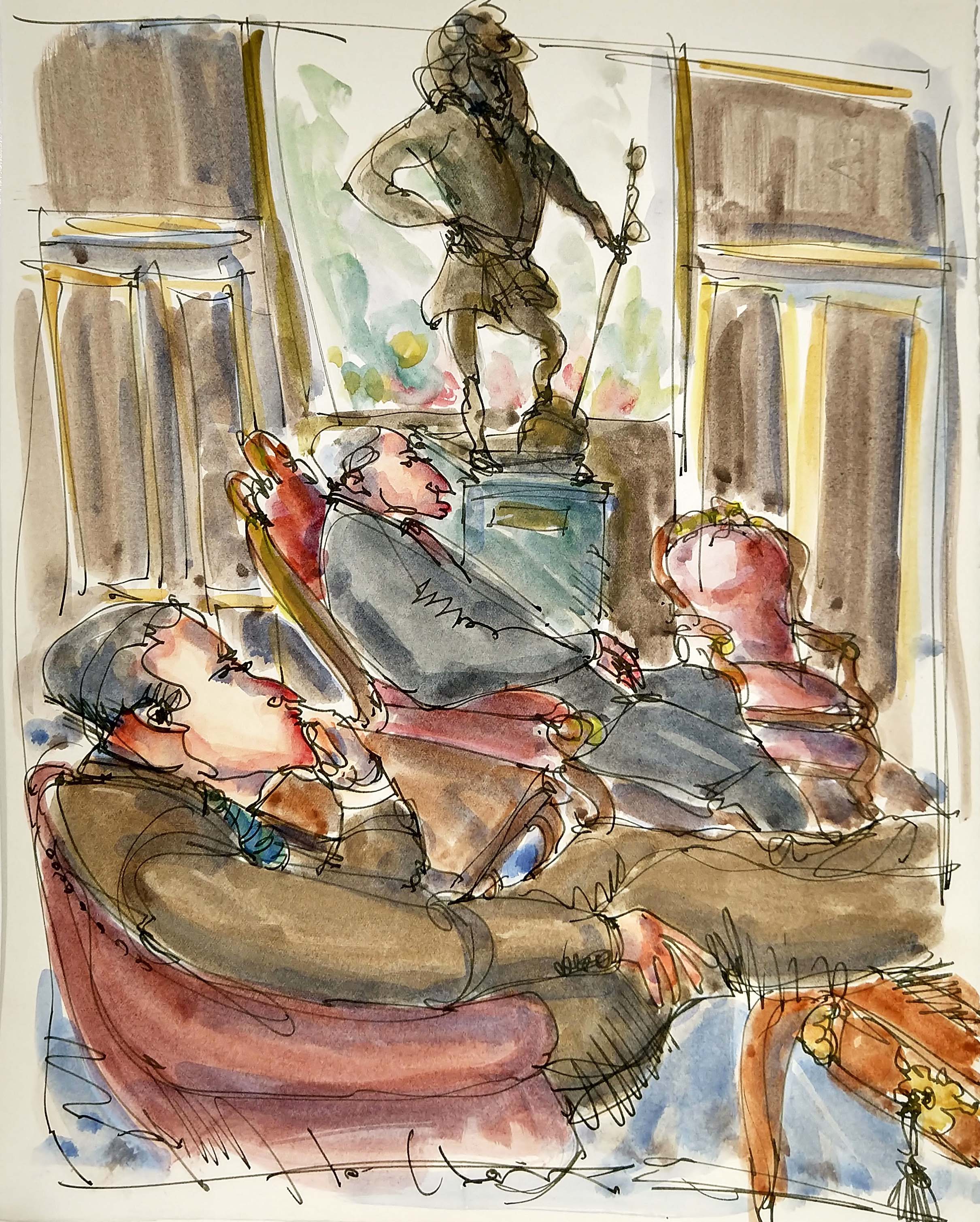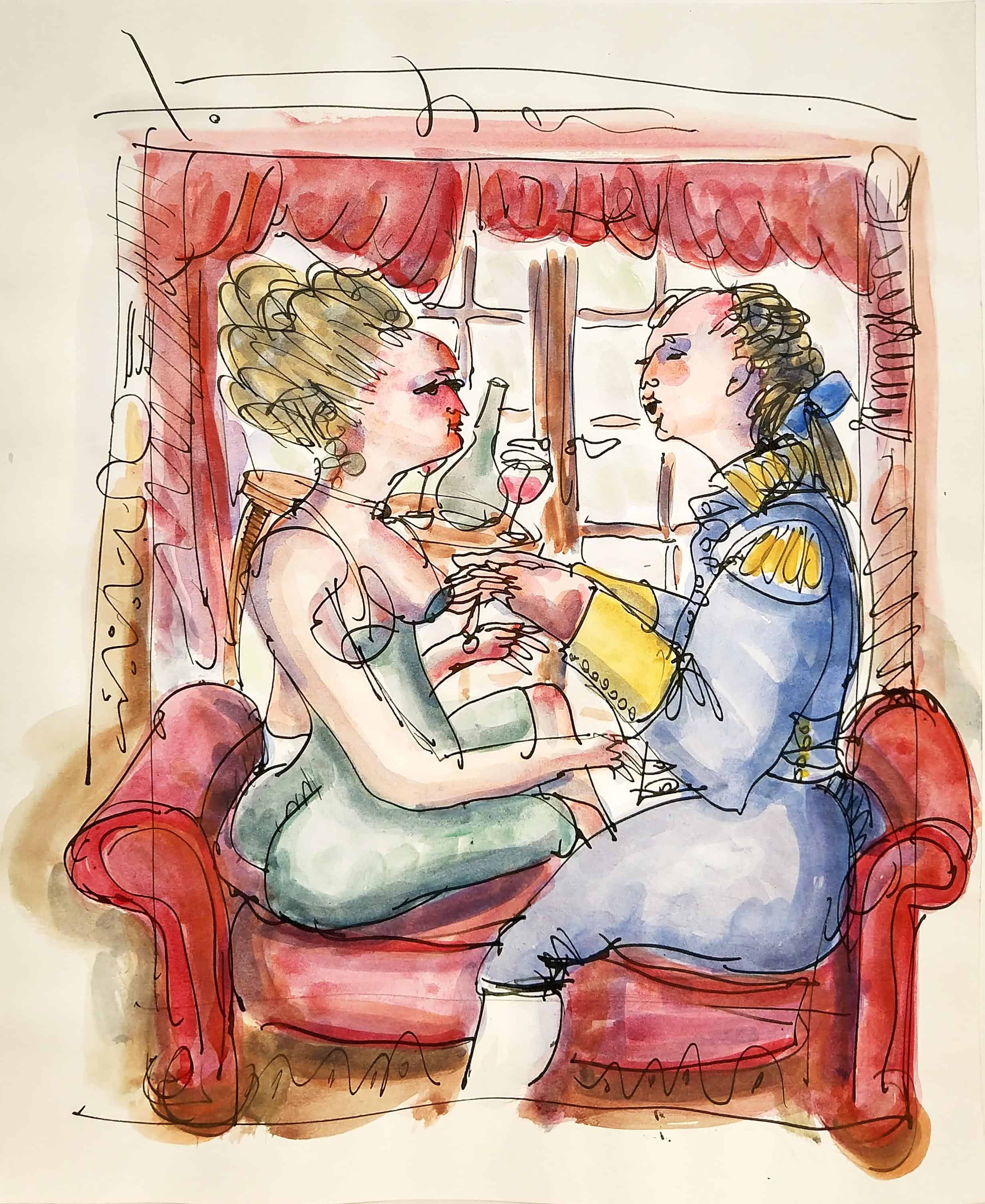Artist Biography
Dale Weaver Totten (1938–2008) was born in Summit, New Jersey. During his formative years, he attended Kent Hill Preparatory School in Maine and began a lifelong passion for traveling worldwide. Totten served in the United States Military from approximately 1954-1957. He began exhibiting his artwork in the Baltimore and Washington, D.C. locales in 1959 and continued into the early 1960s.
When he moved back to New Jersey in 1964, he was employed by the publication Automobile Quarterly. During this time, his daughter Tabitha recalls, Totten would have lunch in New York City with his wife and daughter around four times per week and regale the two with updates on his current projects and the companies for which he worked. When Totten decided to leave Automobile Quarterly, the publisher of the magazine, L. Scott Bailey, gifted the artist several bound subscription copies with “Dale Weaver Totten” embossed in gold leaf. From 1965-66, he worked as the art director for True Magazine, a risqué publication targeted at college-aged males. Totten then worked for the Hearst Corporation for several years as a freelance artist, after which his name became recognizable and sought-after in the advertising industry. He attended art school in Maryland, where he met his wife Mary, who worked as a stock broker during 1960s.
In the late 1970’s and 1980’s, Totten was the senior artist at The Walt Disney Company in Florida. During his ten-year employment as art director for Walt Disney, Totten was responsible for the design and direction of the books used for the ‘Wonders of Walt Disney’ program, which produced educational textbooks and workbooks. He is also credited with the idea and design for the Mickey Mouse balloon.
Totten's later artworks include original watercolors and drawings, which he created independently, and were an extension of his professional experience. His subjects are ordinary people engaged in mundane activities, and through the fluid lines of his pen, the artist captures the essence of their movements and their place in time. Working with a Japanese bamboo pen, Totten spoke of his fascination with the way the inks flow to create the movement. He painted with the seven basic ‘pure palette’ colors. He was inspired by the painting of Van Gogh, Gauguin, and Modigliani, as well as the great commercial illustrators of his time.
Perceptive commentary on human relationships combined with a gentle humor marks his unique and sophisticated drawings. The artist unobtrusively observed his subject and made a series of sketches. He chose the best sketch and finished the drawing with the addition of watercolor. The resulting work has an immediacy which pulls the viewer into the picture. The nature of Totten’s work enables everyone to appreciate the skill necessary to produce something which is not only well executed, but fun to see. According to his daughter Tabitha, Totten’s legacy was “being able to communicate with and give to people,” and the singular way in which his artwork “saw through time and was all-inclusive.”
The Dale Weaver Totten Collection is available exclusively at Jewel Spiegel Gallery in Englewood, New Jersey.



